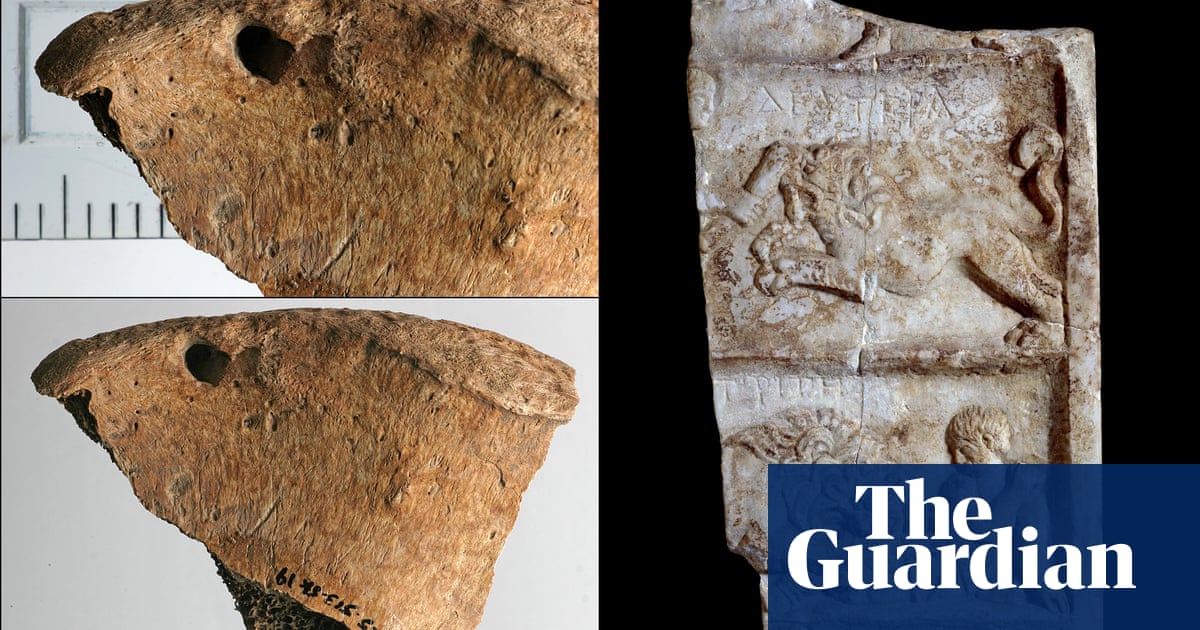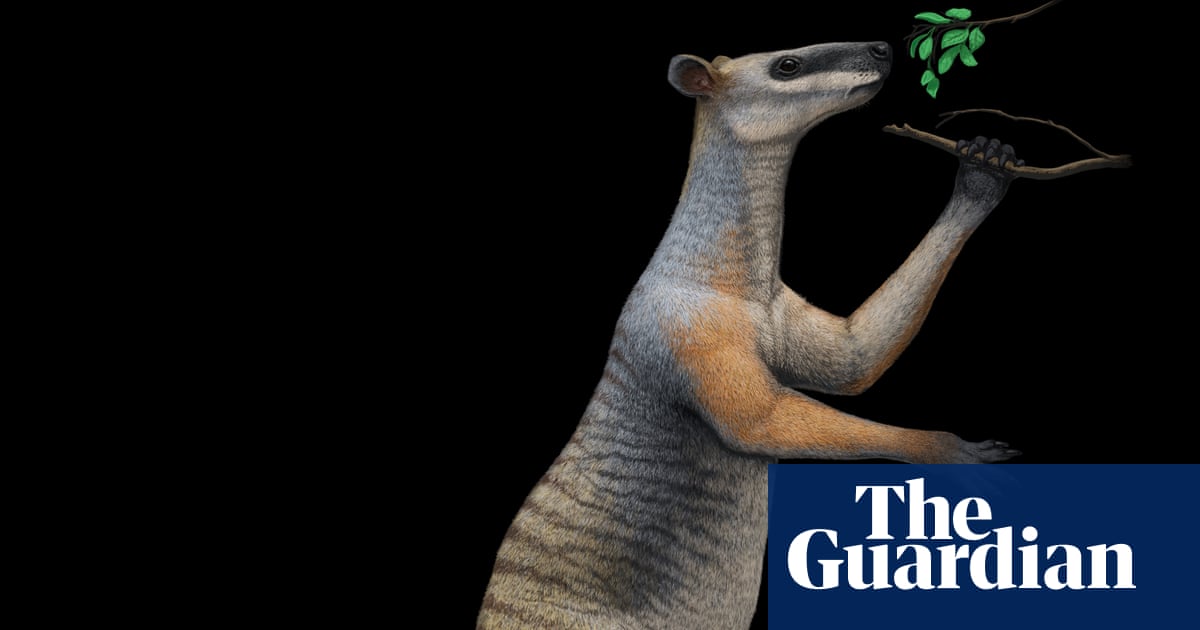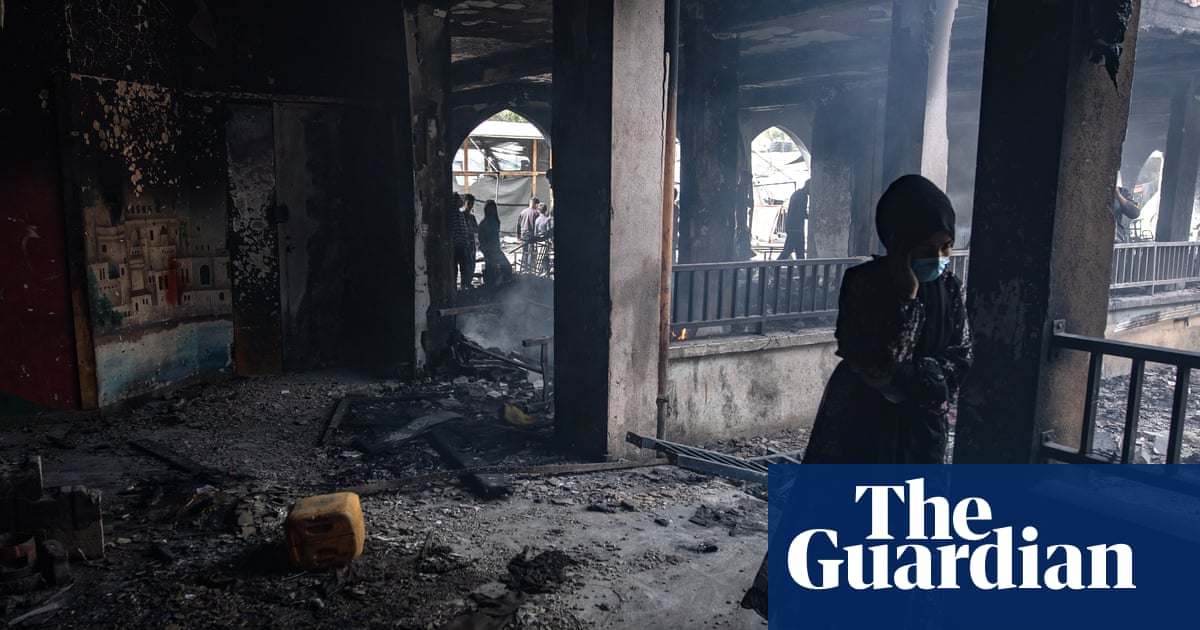As a child growing up in Trinidad and Tobago in the 1930s and 40s, John Lyons’ imagination was electrified by his homeland’s folklore, beliefs and rituals. There was the jumbie-owl, a ghost bird or harbinger of death, who flew between the world of spirits and the living, and the soucouyant, an elderly woman who wreaks havoc as a flying nocturnal fireball-vampire. And there were the real-world devils, painted blue and red, molasses or tar-smeared, lashing whips that recalled plantation-owner brutality, encountered at carnival. “They were part of my consciousness and lived as a visceral reality from a tender age,” he says today.
The artist’s major touring survey, Carnivalesque, conjures these figures in paintings using lush brushwork in heated colours, directing their disruptive energy into unsettling scenes that can be ecstatic or brooding, threatening or jubilant. Beginning with work from 1964, when Lyons graduated from south London’s Goldsmiths’ College, it chronicles six decades of his development as a painter and award-winning poet. In an art world that had been largely deaf to Black voices until the sea change wrought by Black Lives Matter, it is also, incredibly, something of a big break for the 91-year-old. “It’s a strange, humbling experience,” he says. “It is as though I’m looking at the work of someone else on the walls.”
Trinidad and Tobago’s folkloric figures “represent for me a strength to survive with my self-respect, often in the face of hostility in 1959 London during my pursuit of art education”, he explains. Part of the Windrush generation, Lyons came to Britain to study at Goldsmiths’ in the late 1950s. Finding few doors open to Black artists when he graduated, he moved to Manchester, teaching art full-time at schools and colleges, while founding artists’ initiatives and studios to forge a grassroots Black arts scene in the north with friends such as the acclaimed painter Denzil Forrester, Alnoor Mitha and Lin Tang. All the while, he painted and wrote poetry tirelessly. “Teaching was an essential part of my journey of discovery,” he says. “It became an intense part of my painting activity in my studio. I’d share the dialogue I was having with my paintings with students.”
It wasn’t until the 1980s that he first began using his heritage directly in his work, while a new British Black arts movement saw marginalised younger artists begin to work and exhibit collaboratively. “I did feel ethnically connected to the young Black artists who were subjected to the same disadvantages as I was having,” he says. “I admired the unifying effect of the collective; finding their own spaces to exhibit, and the consolidation of their networks.” Although Lyons’ paintings were selected to be shown alongside that of this emerging generation, his vision was rather different from their identity politics and issues-driven output.
His work animates the historical roots of carnival or masquerade, as an alternative celebration to the Easter masquerade balls of European plantation owners, and a chance for enslaved Africans to express their own traditions and beliefs. Yet it hinges on more timeless, abstract themes, channelling the allegorical figures and rituals into questions around the artist’s path, self-discovery or the limits of knowing. At the same time, his engagement with the processes of painting, its dance between intuition and the demands of colour and form, looks to European modernist forebears such as Klee, Kandinsky, Chagall and Matisse. Painting, he says, “is an adventure in creative uncertainty. It is a way of existing in a world we still know very little about.”
The survey is by no means seen as the cap to his career, either. “The attention has ignited more inspiration and energy,” he says. “Being an artist and poet is my way of living as you breathe to keep alive.”
Carnival of monsters: four works by John Lyons

Masquerading, 1992
Shapeshifters descend on the viewer from a Technicolor sky in this unsettling vision. They include the soucouyant, a blood-sucking flying crone and a frequent character in Lyons’ paintings, who blends European vampire traditions with those of Africa; a man with a jumbie-bird face; and a Shakespearean jester. They point to different strands of the artist’s journey, beginning with his colonial education and Trinidad’s hybrid traditions.

The Counsellor, 1996-98
This self-portrait stands out for its quieter meditative tone. It aligns Lyons with one of his recurring motifs, the jumbie-bird, an owl-like harbinger of death or manifestation of the dead. Yet for the artist, it’s a creative guide from a liminal zone between life and death: “It advises me to embrace uncertainty as I paint,” he says.
after newsletter promotion

Before Ash Wednesday in Trinidad, 1988
In Lyons’ paintings, carnival devils such as Jab Jab, with his planter’s whip, or Jab Molassie, a brightly painted devil daubed with molasses, share energies with European clowns and jesters, as with the purple Pierrot, here. In both traditions, carnival takes place in the run-up to Ash Wednesday, originally as a counter to the ruling order. Its masked costumes acted as disguises for its participants, upending social roles and enabling mimicry and protest.

Mama Look a Mas Passin, 1990
With its dangerous looming devils, this work suggests the wonder and trepidation Lyons felt as a child seeing Trinidadian carnival processions, or mas, for the first time. For him, its folkloric characters and mythology of the islands became “realities etched in my psyche”.
John Lyons: Carnivalesque is at The Box, Plymouth, 8 February to 5 May.

.png) 2 months ago
28
2 months ago
28













































